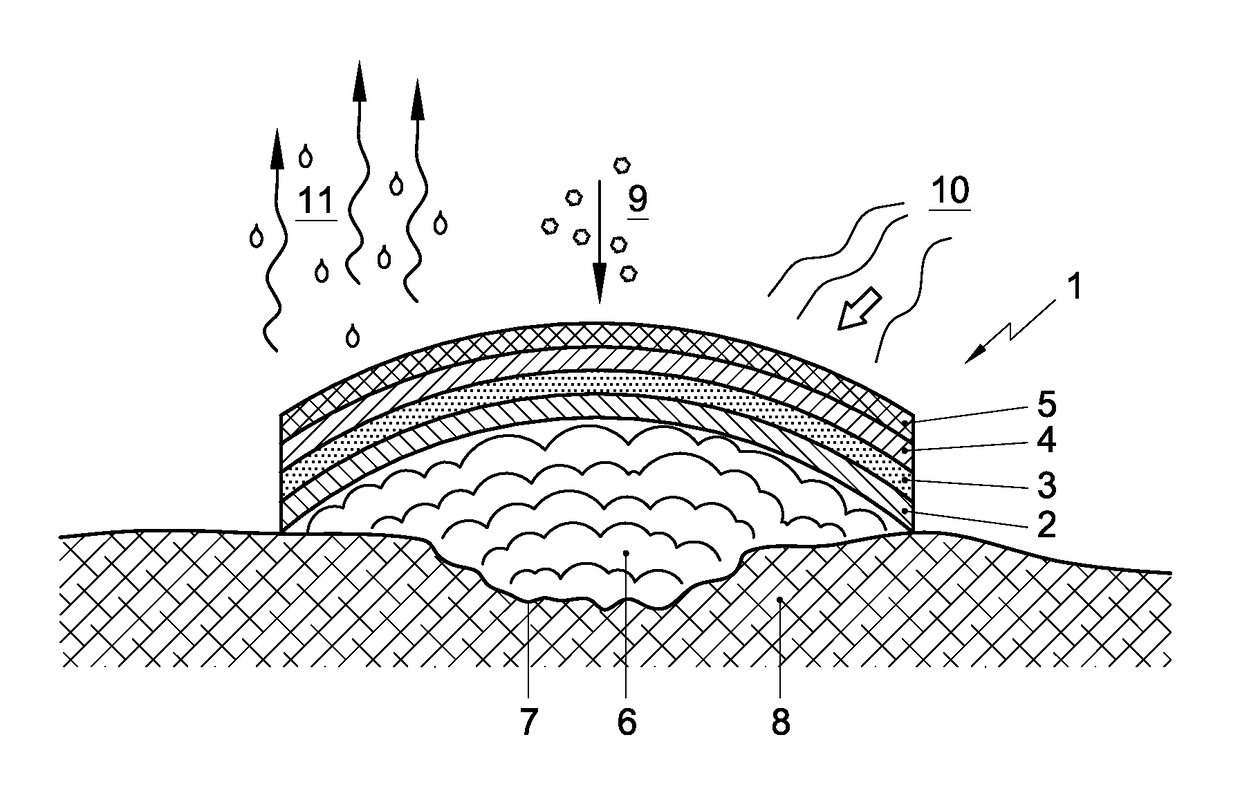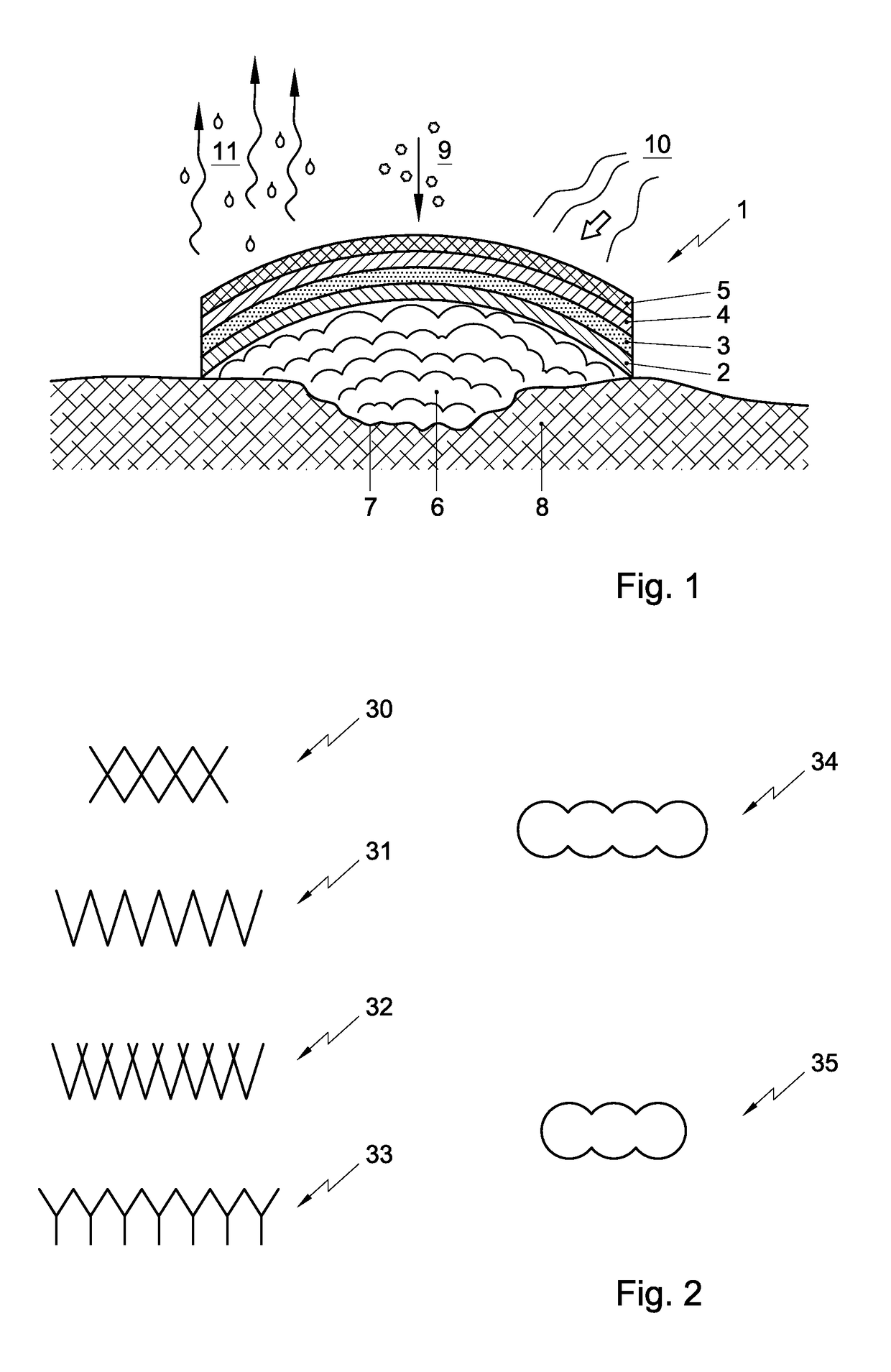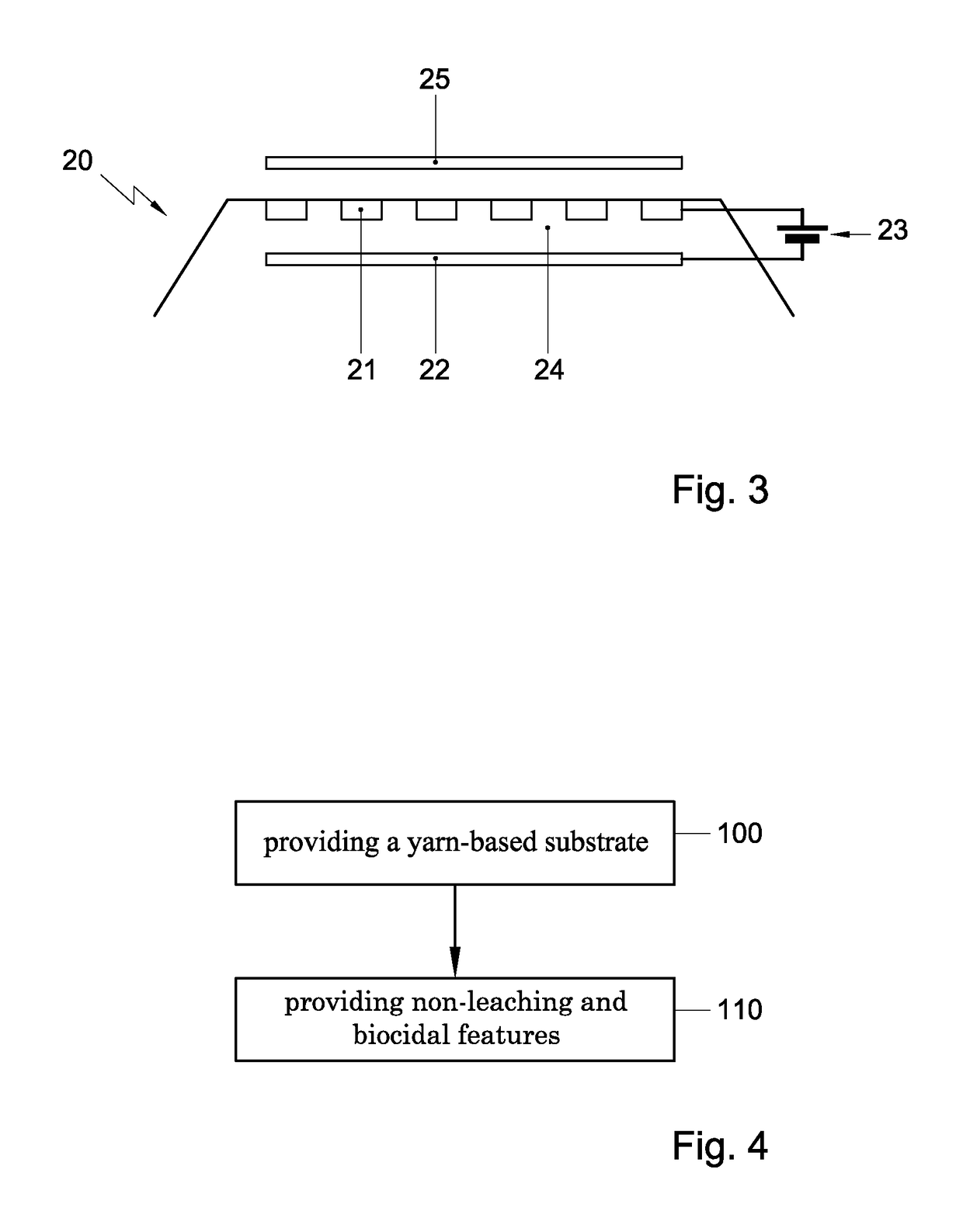Disinfecting wound dressing and process for preparing such
a wound dressing and disinfection technology, applied in the direction of biochemical fibre treatment, biocide, plant growth regulators, etc., can solve the problems of patient discomfort, complex existing wound dressings for burn wounds, and application that requires skilled medical personnel
- Summary
- Abstract
- Description
- Claims
- Application Information
AI Technical Summary
Benefits of technology
Problems solved by technology
Method used
Image
Examples
Embodiment Construction
[0031]It is noted that the figures show merely preferred embodiments according to the invention. In the figures, the same reference numbers refer to equal or corresponding parts.
[0032]FIG. 1 shows a schematic cross sectional view of a wound dressing 1 according to the invention. The wound dressing is intended for covering wounds, such as burn wounds, ulcers and cut wounds.
[0033]The wound dressing includes a multi-layer. In the shown embodiment, the wound dressing 1 includes four functional layers, viz. a wound contact layer 2, also called skin contact layer that e.g. prevents cream penetration, does not stick to dried cream, and assures easy transport of water in the case a cream was applied on a wound, or easy transport of wound fluid in other cases. The wound contact layer 2 forms the bottom layer that is applied to a wound surface 7 of a wound 8. The wound dressing further comprises an absorbing layer 3 that absorbs water coming from the cream layer through the wound contact laye...
PUM
| Property | Measurement | Unit |
|---|---|---|
| adhesion | aaaaa | aaaaa |
| resistance | aaaaa | aaaaa |
| durability | aaaaa | aaaaa |
Abstract
Description
Claims
Application Information
 Login to View More
Login to View More - R&D
- Intellectual Property
- Life Sciences
- Materials
- Tech Scout
- Unparalleled Data Quality
- Higher Quality Content
- 60% Fewer Hallucinations
Browse by: Latest US Patents, China's latest patents, Technical Efficacy Thesaurus, Application Domain, Technology Topic, Popular Technical Reports.
© 2025 PatSnap. All rights reserved.Legal|Privacy policy|Modern Slavery Act Transparency Statement|Sitemap|About US| Contact US: help@patsnap.com



